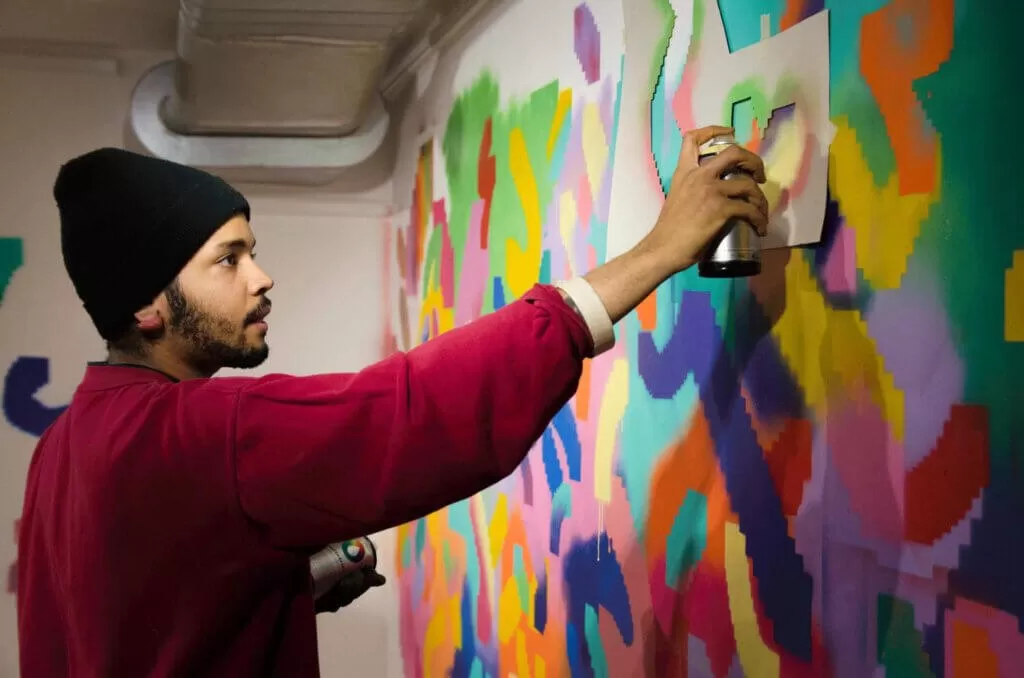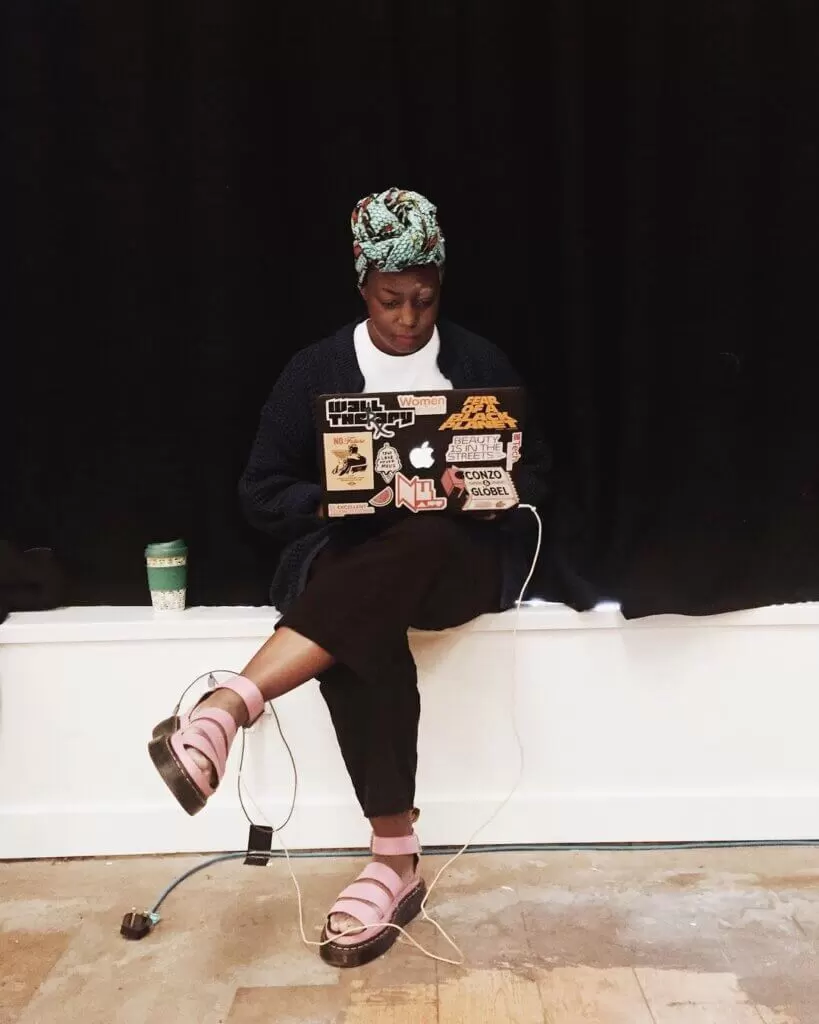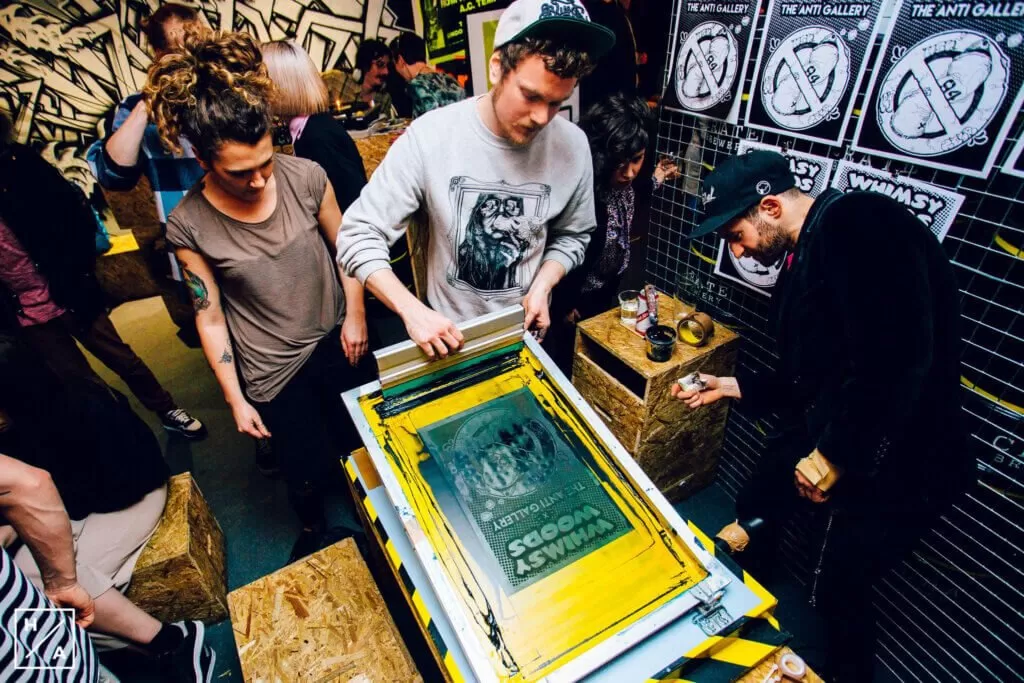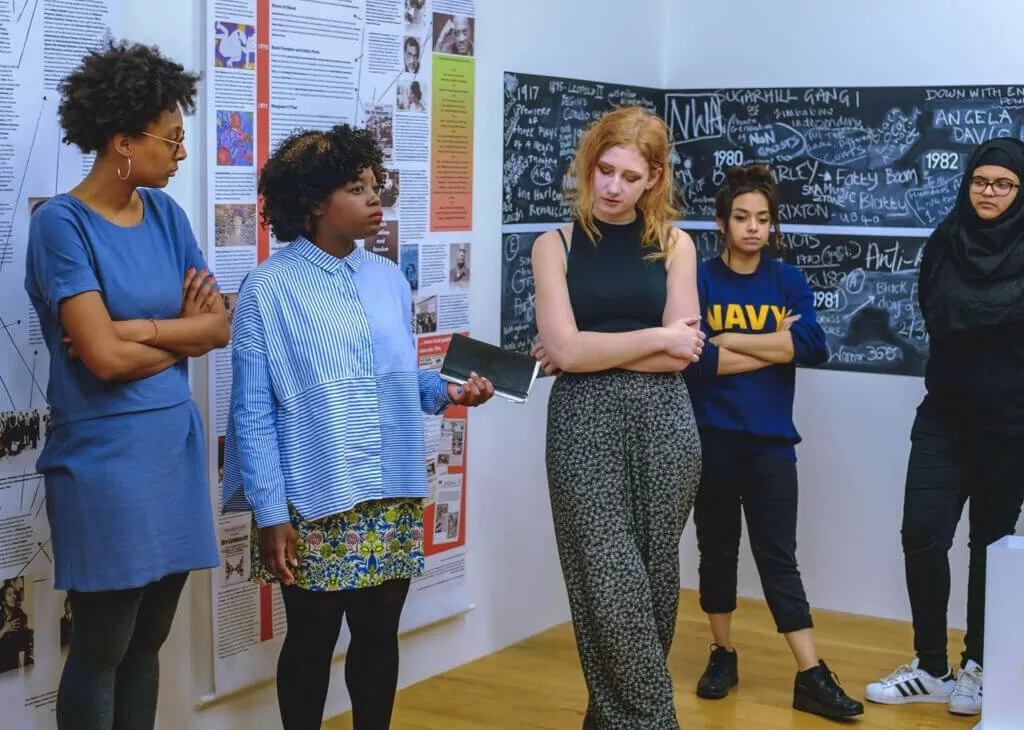We are pleased to welcome independent Nottingham based curator Saziso Phiri. She is the founder of The Anti Gallery, a creative platform that is breaking the mould of the traditional art galleries and exhibitions.
The gallery specialises in showcasing art from emerging artists in alternative spaces. Phiri is passionate about bringing light to early-career artists and changing the dated approach of the artist to gallery process.

I actively seek to work with artists who are passionate about the themes explored through their work
Saziso Phiri
Creativity and exhibiting engaging projects is at the ethos of Phiri curating ideology and earlier this year saw her execute the PR for “Postcards from Isolation” created by London-based Sabato Studio later going on to join the project.
Postcards from Isolation is a creative initiative that consisted of a collection of interactive notes reflecting individuals social and cultural experiences amid the ongoing COVID 19 pandemic.
The project featured unique contributions from artists, designers, and developers from around the globe. The postcards display interactive text-based work to mind-bending figurations in a digital form. People could then send them to express their emotions with others during the lockdown phase of the coronavirus.
The project was well-received being featured in HypeBeast also shortlisted as a nominee for the Awwwards design, creativity and innovation on the Internet. Phiri is a curator to keep an eye on, making waves with her expectational creative expression and engaging projects. In this interview, we learn more about her curating process, views on the art world and more.
Q: First things first, why do you do what you do?
Saziso Phiri: I enjoy art and design and how they can be used as mediums for storytelling, sharing experiences and learning. I launched The Anti Gallery, a pop-up art gallery to create and exhibit art away from traditional gallery environments. A lot of people enjoy art, but don’t necessarily want to visit the white cube.
There are so many ways that people can engage with art, and I want to remove the barriers that stop people from doing so. I am also passionate about championing and representing early career and emerging artists, and so with The Anti Gallery and work that I do with other organisations, providing a platform for artists to grow, develop and showcase their work is significant to me.
Q: What is your inspiration?
Saziso Phiri: Prayer, people, nature and travelling. It’s through engaging with these that I have been able to generate ideas for some of my best projects.

Q: What is your creative process when you’re curating for exhibitions?
Saziso Phiri: This differs from project to project. If I am working with an organisation or gallery, I will usually have a brief to follow, but generally, the process starts with getting to know the artist or collaborator(s) the best that I can. Researching their work and methods, speaking and meeting regularly. It’s just as important for me to get to know them as a person than it is their work, so the time spent with them is valuable.
Q: When you are selecting works from artists, what do you look for in an artist?
Saziso Phiri: There’s a certain Je nais sais quois – I can’t explain, but when I see it I know it! Alongside that good storytelling is and work that speaks for itself is very important for me. I actively seek to work with artists who are passionate about the themes explored through their work (which will be themes I am particularly interested in exploring), and who aren’t just creating art for art’s sake.

Q: What strength or weakness do you look for when you are selecting a venue for an exhibition?
Saziso Phiri: These days one of the most important things for me is accessibility. I find it very uncomfortable holding exhibitions in spaces that aren’t accessible to the broader public, so if there’s no wheelchair access, I’ll be reluctant to go with it. The location needs to have some link or relevance to the themes explored through the work too.
Q: The display of artwork is essential to an exhibition experience; how do you decide on where each artwork should be placed for the best exhibition experience?
Saziso Phiri: It all depends on the type of space. Accessibility is important, so work should be displayed in a way that is comfortable for the viewer to engage with it physically. If I am working on a show that has different themes or mediums, I will generally group works with the same or similar themes/mediums together. Colour and shape also influence my decision for displaying works.
If I am working on a multidisciplinary show and there’s sound involved, sound pieces will generally be accessible through headphones to avoid distractions to other works in the exhibition.

Q: What situations might occur that would cause you to rethink an exhibition?
Saziso Phiri: A location may no longer be suitable for an exhibition, or an event may occur that may prevent access to space, like what has happened around the world with the pandemic and galleries being closed. In instances like this, I would look at alternatives such as digital opportunities, but with the aim of rescheduling the IRL experience to a later date.
There is a project that I am currently working on with an artist. The original piece that they presented for the commission was ethical and moral. But I immediately felt uncomfortable with it, and I suspected that audiences might have deemed it insensitive with everything that’s been going on in the world recently with Covid-19, and recent race relations. As difficult a decision as it was to make, we had to go back to the drawing board, but what has been produced following the first piece is impressive.

Q: What would you say is an integral part to the work of an art curator?
Saziso Phiri: When we look to etymology, we see that the word ‘curator’ originally meant ‘one who has care of a thing, a manager, guardian, trustee’, and when establishing my role in a project I consider this. From start to finish, I have to address the needs of the artist and to present their work in the best way possible.
Q: What do you think is the primary challenge facing exhibitions today?
Saziso Phiri: Not keeping up with the times and not adapting to new ways of engaging and interacting, and how the world is changing digitally – especially with young people.

Q: What do you believe are the most effective ways for marketing exhibitions?
Saziso Phiri: I regularly work on projects with a limited budget, and so I have to be savvy with marketing. I rarely pay for marketing, but have found social media to be effective. You can’t go wrong with it if you know how to use it properly.. It’s free and easily accessible for many people. There are so many creative ways to market exhibitions through social media platforms through video content, photos and hashtags. But you’ve got to make sure it’s tailored to your targeted audiences and their interests.
Artist interviews online and in newspapers and magazines are also effective, in both general publications and industry focused ones. If you can get a shout out or article in at least one major publication, that’s great. I managed to get a project I am currently working with featured in Hypebeast. With such a massive audience and reputation this was an exciting moment for all of us on the team, and on the back of this other publications caught on and featured the project themselves.

Q: What do you like and dislike about the galleries/exhibitions?
Saziso Phiri: Galleries and exhibitions are great for learning (and unlearning) and gaining new perspectives. I like how most major public galleries have programmes that include workshops, talks, gallery tours, film screenings and performances, which in some cases are free of charge to get involved with. I used to programme family activities at a gallery and enjoyed seeing families engage in artistic activities in response to exhibitions.
Q: In your opinion, where do you see the future of art curation in 10 years?
Saziso Phiri: It’s hard to say. There will definitely be more focus on digital. There will be more video, virtual reality and artificial intelligence for sure so more interactive ways of curating and more online exhibitions.

Q: Do you have any advice for curators starting and do not know where to begin?
Saziso Phiri: Make yourself visible. From my personal experience, this was achieved through volunteering at the beginning of my career. I volunteered at contemporary art spaces invigilating gallery spaces and working events. I treated it like alternative education, and not only was I learning the ins and outs of gallery life, but I got to know curators, artists and gallery directors who throughout time became my mentors, colleagues and collaborators.
They also got to know me and were able to provide support, mentorship and further opportunities. Volunteering also allowed me to spend more time with artworks, observing and learning from the behaviours of visitors in the gallery space and how they engage with art. Keep learning. Go to exhibitions, gallery events and art fairs to do so and to network too. You never know who you’ll end up meeting.
Q: Is there anything that worries you about how social media is affecting the promotion of artists, exhibitions and museums
Saziso Phiri: Not really. Social media is an excellent way for anybody to promote anything these days. With galleries being closed because of the pandemic, social media has proved to be super important. I’ve enjoyed attending artist talks and virtual studio visits online and in different countries.
Which I wouldn’t have been able to had they taken place IRL. Social media is also suitable for cutting out the middleman. Artists and galleries can connect directly.
https://www.instagram.com/sazisophiri/
https://www.instagram.com/theantigallery/
©2020 Saziso Phiri, The Anti Gallery, Postcards from Isolation 2020





